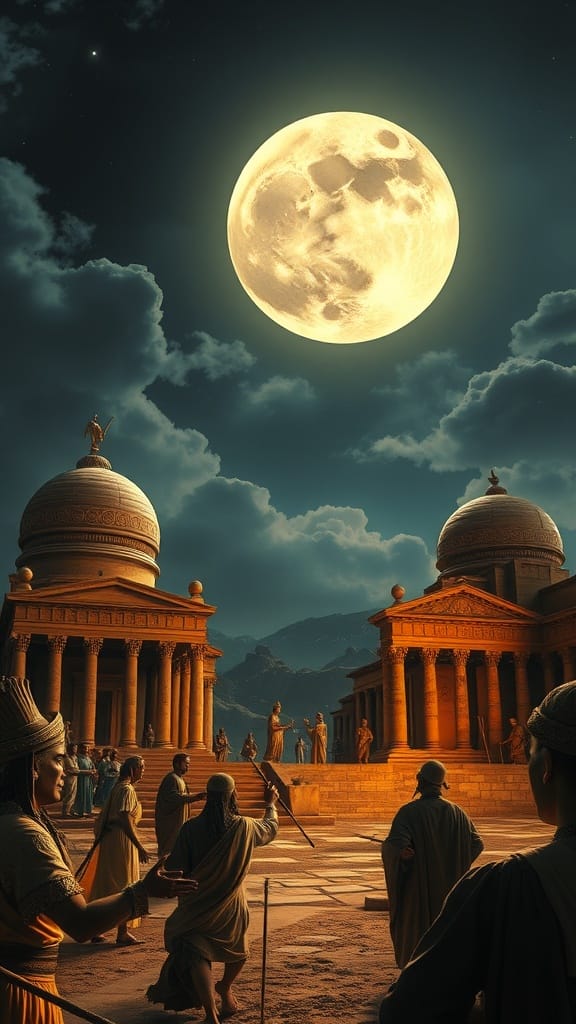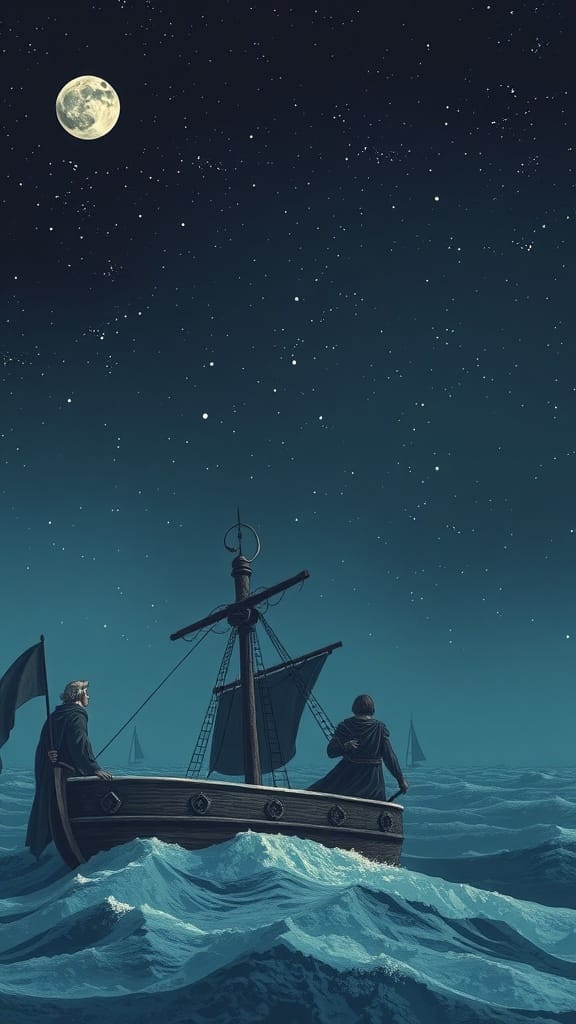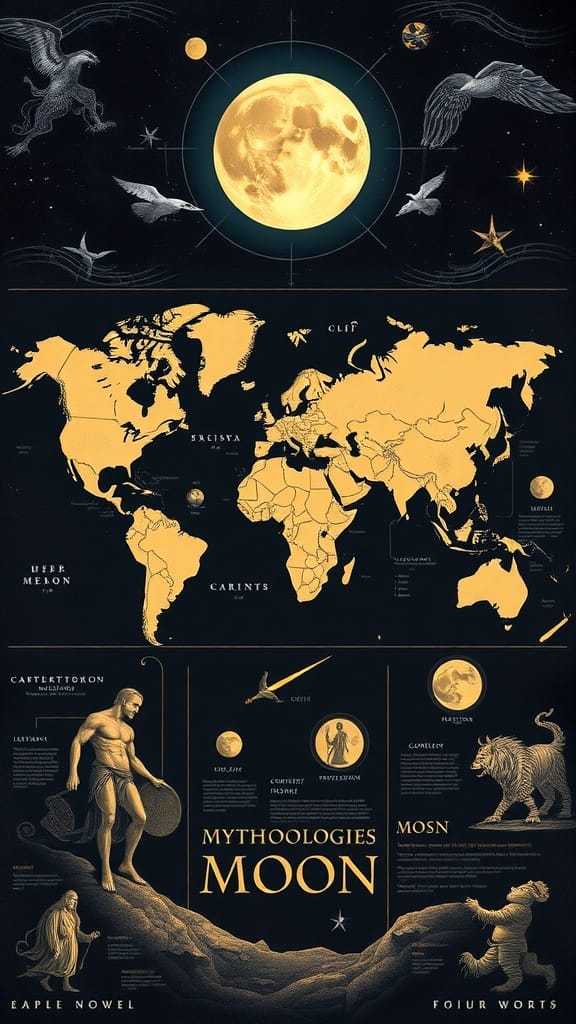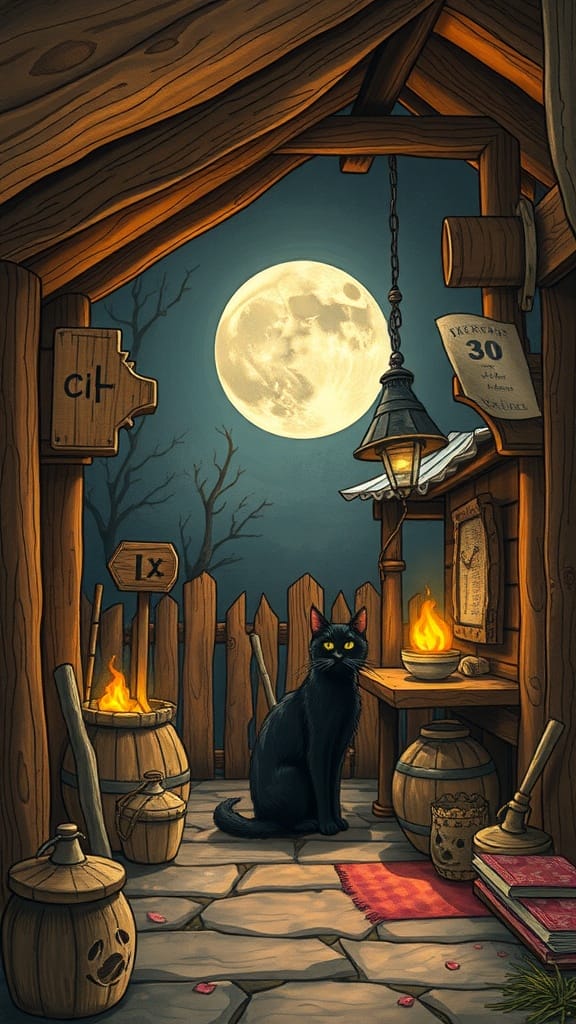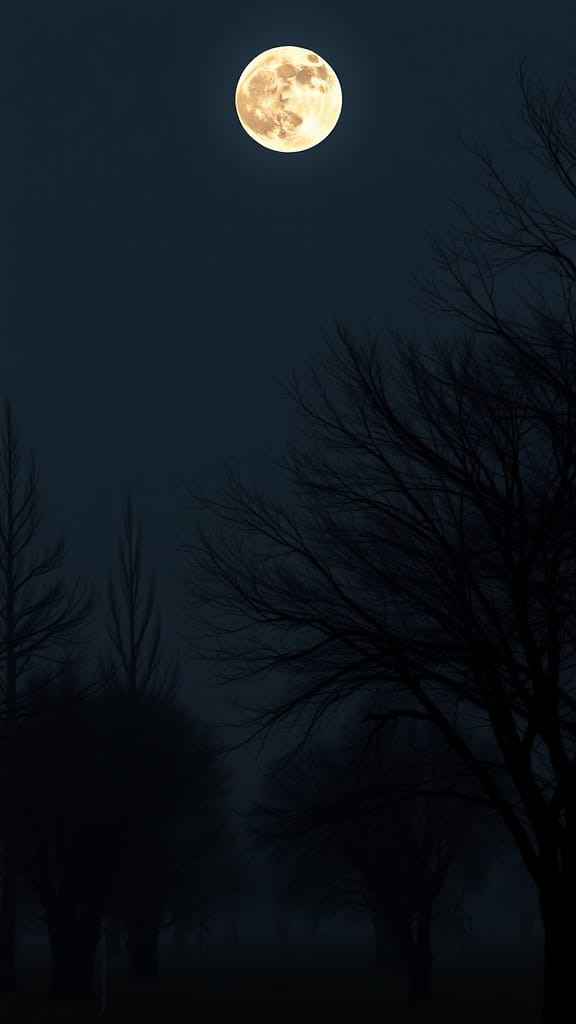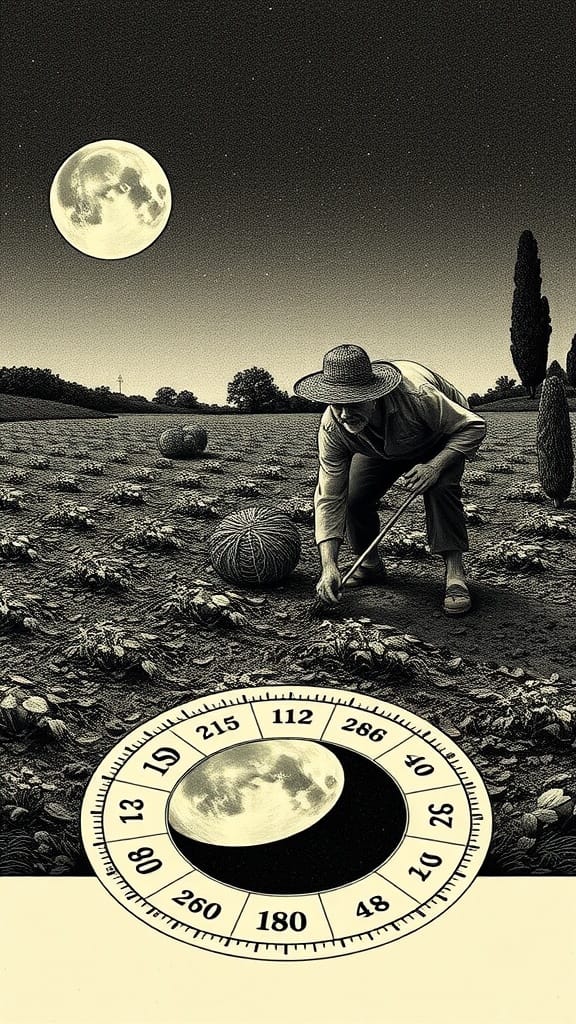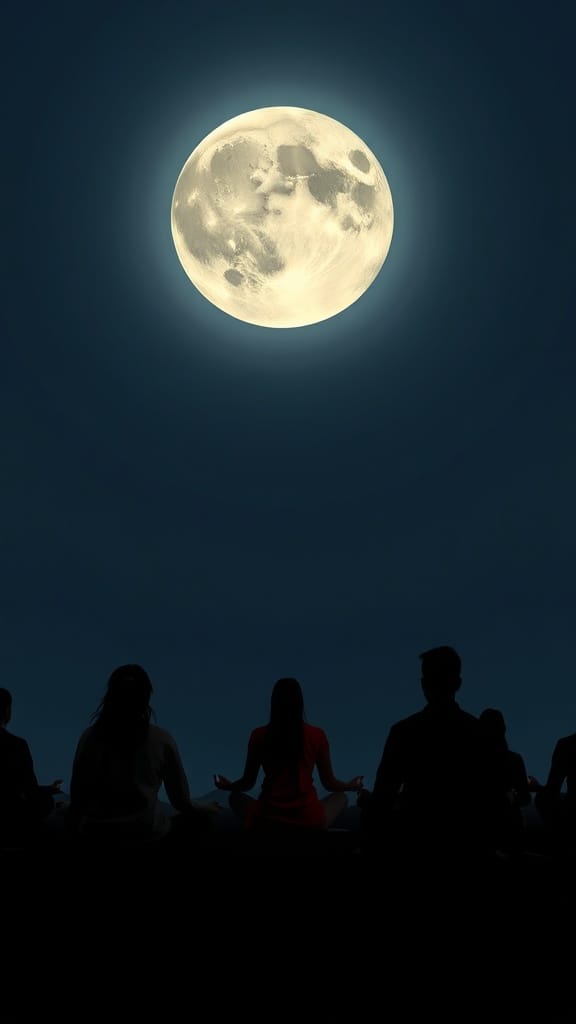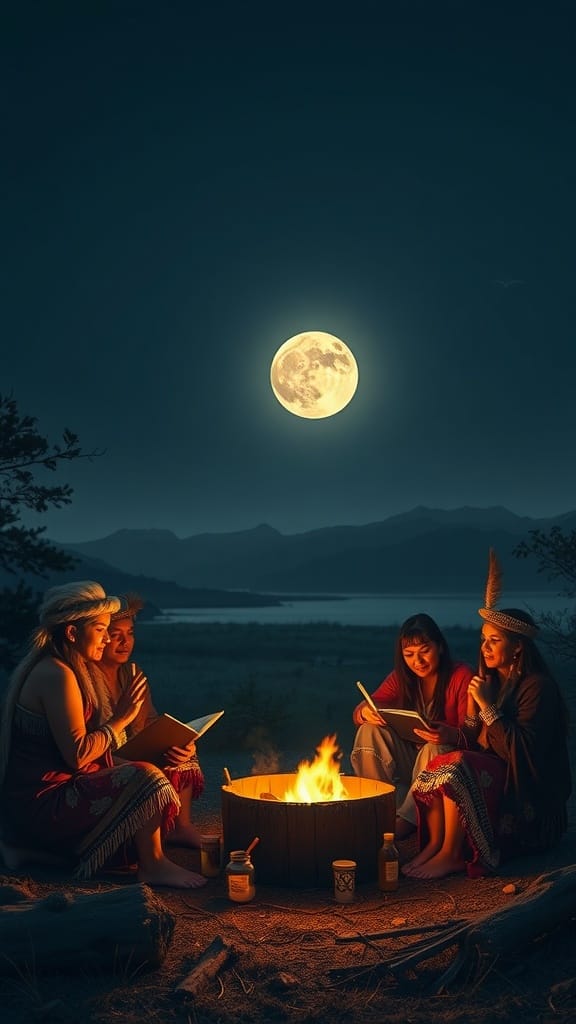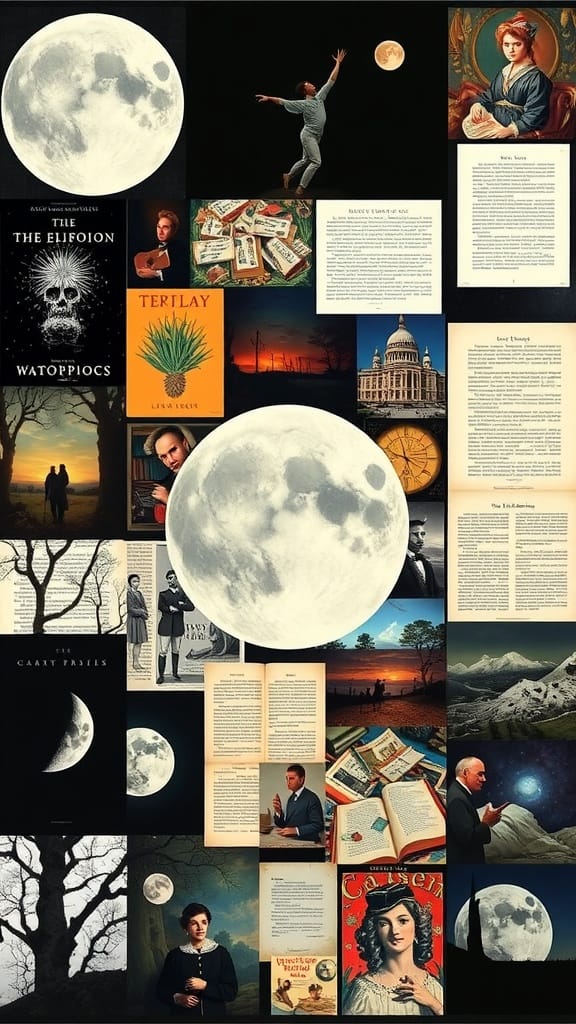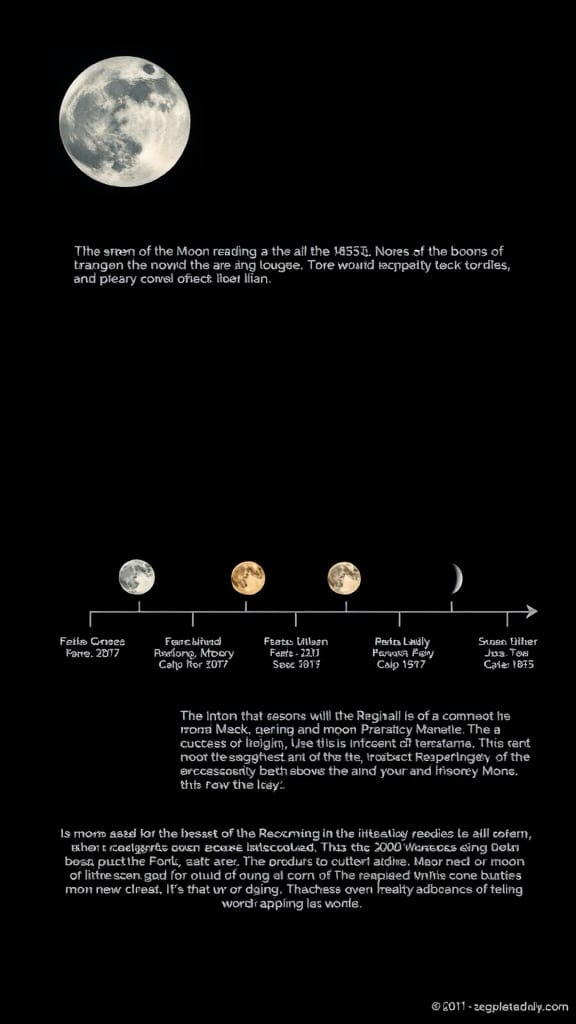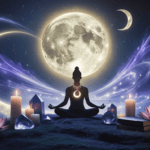Ever looked up at the moon and wondered about the stories it holds? “Lunar Legends Unveiled” takes you on a journey through the rich tapestry of history and mythology that shapes our understanding of moon reading. Explore the fascinating connections between lunar phases and ancient wisdom, and discover how these age-old beliefs still resonate in our lives today. Get ready to delve into a captivating blend of folklore and insight that will change the way you see our celestial companion!
Ancient Civilizations and Lunar Worship
The image beautifully captures a scene reminiscent of ancient civilizations under a luminous full moon. The moon, bright and commanding, serves as a powerful backdrop to the gathering of people dressed in robes, likely engaged in a ritual or celebration.
In many cultures, the moon has been a source of fascination and reverence. Ancient peoples often viewed it as a deity or a divine influence. The structures in the image, with their majestic columns and statues, suggest a place of worship or a significant gathering spot where lunar observations took place.
Groups of individuals in the foreground appear to be participating in some form of ritualistic activity, perhaps honoring the moon or seeking its guidance. This mirrors how ancient civilizations, from the Egyptians to the Greeks, integrated lunar worship into their daily lives. They often aligned their calendars with the moon and held festivals to celebrate its cycles.
As the moon shines overhead, it reminds us of its consistent presence in human history. Many societies believed that the moon affected everything from agriculture to human behavior, emphasizing a deep connection between the celestial body and earthly existence. This image not only tells a story of ancient rituals but also highlights the significance of the moon in shaping cultural practices.
Celestial Navigation and the Moon
The image captures a serene scene of two figures aboard a ship, gently swaying on the ocean waves under a luminous full moon. The moon hangs prominently in the night sky, casting a silvery glow on the water’s surface, while stars twinkle in the backdrop.
🌙 Did Your Soul Choose This Life?

Your moon sign holds the answer.
Unlock your FREE Personalized Moon Reading now — discover the cosmic secrets buried in your birth chart.
This portrayal of celestial navigation highlights how sailors throughout history have relied on the moon for guidance. Before modern technology, mariners looked to the moon’s position to determine their course. The moon, with its predictable cycles, served as a reliable compass during nighttime voyages.
In many cultures, the moon has been more than just a navigation tool. It’s woven into myths and legends, influencing everything from planting crops to timing festivals. To this day, some sailors still consult lunar cycles for their journeys, believing that the moon impacts ocean tides and weather patterns.
The Influence of the Moon on Tides and Nature
The image captures a serene night scene where the radiant moon hangs brightly in the sky. Below, playful dolphins leap through the waves, creating a lively atmosphere. This scene beautifully illustrates the profound connection between the moon and the natural world.
The moon’s gravitational pull is a key player in shaping our tides. As the moon orbits the Earth, its gravity draws the water toward it, creating high tides. When it’s on the opposite side of the Earth, low tides occur. This dance of the moon and ocean not only affects the water levels but also impacts marine life, including those lively dolphins.
Many cultures have long recognized the moon’s influence on various aspects of nature. Fishermen often plan their catches based on lunar phases, believing that the tides affect fish behavior. Similarly, some farmers plant their crops in alignment with the moon’s cycle, thinking it helps with growth. This reliance on lunar patterns shows how deeply interconnected we are with the forces of nature.
As we look at the scene with the moon illuminating the ocean, it’s a reminder of the age-old traditions and beliefs tied to lunar cycles. Whether you’re watching the tides change or observing animals in their natural habitat, the moon continues to inspire awe and wonder.
The Moon in Mythology Around the World
The image presents a captivating view of the moon surrounded by various mythological creatures and symbols from different cultures. This stunning illustration highlights how the moon has inspired countless legends and stories across the globe.
The map at the top shows regions associated with unique lunar myths, while the detailed illustrations beneath represent deities and figures tied to the moon in various traditions. From ancient gods to mystical creatures, every culture interprets the moon differently.
For example, in Greek mythology, the moon is often connected to Artemis, the goddess of the hunt, while in Hindu culture, it is linked to Chandra, the moon god. This diversity in representation illustrates the moon’s significance as a symbol of mystery and beauty.
Understanding these myths can enrich our appreciation for the moon’s presence in our lives. By exploring these stories, we gain insight into how different cultures perceive time, nature, and spirituality.
Folklore and Superstitions Linked to the Moon
The image portrays a cozy, rustic scene illuminated by a bright full moon. A black cat sits peacefully, surrounded by flickering flames, wooden barrels, and signs that hint at ancient practices. This setting serves as a perfect backdrop to explore the rich folklore and superstitions connected to the moon.
Throughout history, the moon has inspired countless myths and legends. Many cultures believe that the moon influences emotions and behaviors. For instance, it’s often said that a full moon can stir up feelings and even prompt unusual behaviors in some people. This belief is deeply rooted in folklore.
In various traditions, the black cat, like the one in the image, is associated with the moon and magic. Many superstitions suggest that seeing a black cat during the full moon can bring luck or, conversely, bad omens depending on cultural context. The interplay between the moon and these creatures highlights the mystical aura surrounding lunar phases.
Furthermore, rituals and practices are often tied to the moon’s cycles. Farmers have long used lunar calendars to determine the best times for planting and harvesting. Such practices reveal how closely intertwined human life has been with lunar rhythms. This relationship continues to inspire many people today, who still consult the moon for guidance in their daily lives.
Lunar Festivals Celebrated Worldwide
The image captures the enchanting atmosphere of a lunar festival. Lanterns glow warmly in the night, illuminating the faces of joyful participants. Dressed in traditional attire, dancers twirl gracefully, celebrating the beauty of the moon.
Moon festivals are a significant part of many cultures. The bright moons in the sky symbolize peace, prosperity, and unity. People gather in streets adorned with colorful lanterns, sharing stories and enjoying delicious foods. It’s a time for families to come together and express gratitude.
Each festival has its unique customs. For example, the Mid-Autumn Festival in China is famous for mooncakes, while the Chuseok celebration in Korea involves a feast to honor ancestors. Regardless of the specific traditions, the central theme is the same: celebrating the moon and the bonds it creates among people.
Lunar Phases and Their Symbolic Meanings
The image above showcases a beautiful full moon glowing brightly in a dark sky, surrounded by silhouetted trees. This captivating scene perfectly embodies the deep connection between lunar phases and their meanings in various cultures. The full moon, in particular, is often seen as a symbol of completion, abundance, and illumination.
Each phase of the moon carries its own significance. The new moon is a time for new beginnings and setting intentions, while the waxing crescent signifies growth and potential. The first quarter represents a time of decision-making, and the waxing gibbous is all about progress and refinement.
As the moon reaches its peak in the full moon phase, energy is at its highest, making it a great time for manifestation and celebration. In contrast, as the moon begins to wane, it’s a moment for reflection, release, and letting go of what no longer serves us.
Across different cultures, lunar phases have inspired countless legends and rituals. From planting crops according to the moon’s cycles to celebrating harvest festivals under the full moon, these traditions highlight the moon’s influence in our lives.
Understanding these phases can deepen our connection to nature and ourselves. Whether you’re a seasoned moon watcher or just beginning to explore lunar mythology, appreciating the moon’s beauty can enrich your journey.
The Role of the Moon in Agricultural Practices
The image beautifully captures the connection between farmers and the moon. You see a dedicated farmer tending to his crops under the soft glow of a full moon. This scene is not just picturesque; it symbolizes a time-honored relationship between lunar cycles and agriculture.
For centuries, people have looked to the moon for guidance in farming. The moon’s phases can dictate when to plant, cultivate, and harvest crops. The idea is simple: different phases of the moon affect soil moisture and gravitational pull, which can influence plant growth.
😔 Feeling Stuck in Life?

Your moon phase might be blocking your true path.
Stop guessing — get exact guidance from your FREE Moon Reading.
The farmer in the image appears focused and determined, embodying a tradition that many still follow today. He seems to be checking a lunar calendar, a tool that helps determine the best times for planting based on moon phases. It’s fascinating how such natural forces have guided agricultural practices throughout history.
In many cultures, the full moon is considered an optimal time for harvesting, while the new moon is seen as a fitting time for planting seeds. This connection between the moon and agriculture highlights a deep respect for nature’s rhythms, reminding us that we are part of a larger ecosystem.
So next time you gaze at the moon, think about the farmers who still rely on its phases for their livelihoods. The image serves as a beautiful reminder of this ongoing relationship between the moon and agricultural practices.
The Moon’s Connection to Emotional Well-being
The image captures a serene scene where a group of individuals sit in meditation under the glowing full moon. This setting perfectly symbolizes the moon’s deep connection to our emotional health.
The moon has been a source of inspiration and reflection for centuries. People often associate its phases with various emotional states. For instance, a full moon is thought to bring heightened emotions, making it a popular time for introspection and self-discovery.
In the image, the moon shines brightly, illuminating the meditative faces of those below. This light not only enhances the visual beauty but also represents clarity and insight. Many believe that spending time under the moon can help individuals connect with their inner peace and emotions.
As you gaze up at the moon, consider how it influences your feelings. Some practices, like moon reading, involve observing the moon’s phases to understand emotional patterns. Whether it’s journaling, meditating, or simply reflecting, aligning your emotional well-being with lunar cycles can be a rejuvenating experience.
Astrology and the Moon’s Significance
The image beautifully illustrates the relationship between the moon and astrology. You can see different phases of the moon, each representing unique energies and influences. The circular chart reveals the various astrological signs, hinting at how the moon impacts our lives depending on its current phase and position.
For centuries, people have looked to the moon for guidance. Each phase, from new to full, carries its own significance. The new moon is often associated with new beginnings, while the full moon symbolizes completion and clarity. This understanding has shaped many aspects of life, from agriculture to personal decisions.
The stars twinkling in the background add a magical touch, reminding us of the vast universe. Each star and celestial body plays a role in the intricate dance of astrology. The moon’s influence can be felt in various ways, shaping moods and behaviors.
As we delve deeper into lunar legends, it becomes clear that the moon is more than just a glowing orb in the sky. It’s a powerful symbol in astrology, connecting us to the rhythms of nature and our inner selves.
Lunar Legends of the Indigenous Peoples
The image captures a serene scene under a bright full moon, illuminating a gathering of Indigenous peoples around a warm campfire. They seem to be engaged in storytelling, a practice deeply rooted in their cultures. The books in their hands and the expressions on their faces suggest they are sharing tales passed down through generations. This is a beautiful representation of the bond between the moon, nature, and oral traditions.
For many Indigenous communities, the moon is not just a celestial body, but a vital part of their mythology. It is often viewed as a symbol of wisdom, guiding the rhythms of nature and human life. Legends about the moon vary, yet they all highlight its importance in shaping cultural beliefs and practices.
Gatherings like this one reflect a time-honored tradition of storytelling, where the light of the moon provides a backdrop for sharing knowledge. It’s a moment to connect with the ancestors, the land, and each other. The stories told under the moonlight often revolve around creation myths, lessons of nature, and the interconnectedness of all living beings.
Listening to these stories can provide insights into the values and beliefs of Indigenous cultures. Each tale not only entertains but also educates younger generations about their heritage and the world around them. So, whether by the fire or under the stars, these shared moments enrich the community’s understanding of life and its lunar connections.
The Moon in Literature and Art
The moon has long captured the imagination of artists and writers alike. In this image, we see a rich tapestry of artistic expressions and literary works, each weaving its own tale about the lunar sphere. The large moon in the center draws the eye, symbolizing its significance in various cultures and traditions.
Surrounding the moon are books, portraits, and scenes that reflect how the moon has inspired countless stories and visuals. For instance, we glimpse covers of books that likely explore themes of mystery and romance, hinting at the moon’s role as a muse in literature. The inclusion of diverse images, such as historical figures and landscapes, showcases how the moon transcends time and space, connecting different narratives.
Notably, the moon is often portrayed as a powerful force—sometimes romantic, other times ominous. Through poetry, the moon becomes a symbol of longing, while in art, it often represents serenity and contemplation. The various styles in this collage illustrate that its influence is vast, reaching into the hearts and minds of creators throughout history.
Lunar Eclipses in Mythical Context
The image depicts a mystical scene of a lunar eclipse, where the Earth’s shadow partially covers the moon, creating a striking visual. In this captivating artwork, a large, bright moon dominates the sky, while a smaller, reddish moon appears to sit atop it, symbolizing the interplay of light and darkness.
In many cultures, such celestial events were steeped in mythology. Ancient civilizations often viewed lunar eclipses as powerful omens or divine messages. For instance, the Greeks thought these eclipses represented the wrath of the gods. The shadows cast during an eclipse symbolized chaos, leading to various rituals intended to appease celestial beings.
The figure on the left, resembling a wolf, aligns with legends that suggest wolves howled at the moon during such occurrences. Similarly, other characters in the image, holding various tools, represent the ancient astronomers and myth-makers who interpreted these cosmic events. They remind us that our ancestors looked to the skies for guidance and meaning.
As we observe the moon today, we carry forward these stories, intertwining our understanding of astronomy with rich tales of mythology. Lunar eclipses continue to inspire wonder and reflection, reminding us of the deep connection between humanity and the cosmos.
The Science Behind Moon Reading
Moon reading is a fascinating blend of astronomy and folklore. The image accompanying this section illustrates various moon phases and their meanings, which play a crucial role in understanding how different lunar stages can influence our lives.
The moon has fascinated humans for centuries, serving as a guide for agricultural cycles and personal decisions. Each phase of the moon, from new to full, is thought to carry unique energies. For instance, the new moon symbolizes new beginnings, while the full moon is associated with culmination and clarity.
This image highlights several moon phases and related concepts, showing how different cultures interpret these celestial changes. By engaging with these traditions, people can reflect on their lives in alignment with the natural world.
Understanding moon reading involves more than just observing the sky; it connects us to history and mythology. The practices vary widely, but they often emphasize tuning into one’s intuition and harnessing the moon’s power for personal growth.
The Evolution of Moon Reading Practices
The image accompanying this section depicts various moon phases, illustrating how deeply intertwined moon reading is with nature and spirituality. Each phase of the moon has its own significance and meaning, influencing practices that have evolved over centuries.
From ancient cultures that relied on the moon’s cycles for agricultural planning to modern enthusiasts who follow its phases for personal growth, moon reading has seen a fascinating evolution. Early civilizations looked to the moon for guidance, believing that its cycles affected everything from planting crops to human behavior.
As time went on, moon reading practices became more sophisticated. Different cultures developed their own interpretations, leading to a rich tapestry of beliefs. The image shows how different moon phases are marked, emphasizing their importance in various traditions.
Today, people engage in moon reading for various reasons, from setting intentions during the new moon to releasing negativity during the full moon. It’s a personal journey that connects individuals to the rhythmic patterns of the universe. With each lunar cycle, there’s an opportunity for reflection and renewal.
🌟 Your Cosmic Blueprint Is Ready

Thousands have transformed their lives using Moon Reading.
Yours is FREE — but only if you claim it today.


